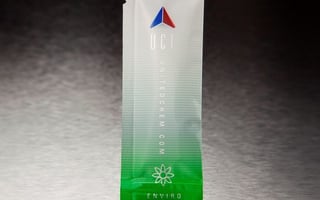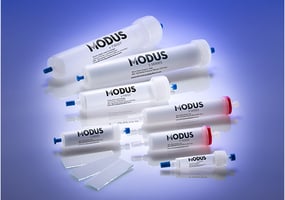In chromatography, every detail matters. From selecting the right column to optimising mobile phase...
How Secure Sealing Prevents PCR Contamination and Sample Loss
PCR (Polymerase Chain Reaction) is a powerful tool for amplifying DNA, but its sensitivity is a double-edged sword. While it enables the detection of even the smallest amounts of genetic material, it also means that even minor contamination or sample loss can compromise your results. One of the most effective ways to safeguard your PCR workflow is by using tubes and plates with secure sealing. Here’s why secure sealing matters—and how it protects your science.

The Risks of Poor Sealing in PCR
PCR reactions are typically run at high temperatures and involve multiple heating and cooling cycles. Without a proper seal, several issues can arise:
- Evaporation: High temperatures can cause your reaction mix to evaporate, reducing the volume and concentration of your samples. This can lead to inconsistent amplification, lower yields, and unreliable results.
- Contamination: An unsealed or poorly sealed tube is an open invitation for airborne contaminants, cross-contamination between samples, or even accidental spills—all of which can introduce unwanted DNA or inhibitors into your reaction.
- Sample Loss: Even minor leaks can result in the loss of precious samples, especially in low-volume or sensitive applications like qPCR.
How Secure Sealing Makes a Difference
1. Prevents Evaporation
A tight, leak-proof seal—whether from a flat or domed cap, or a high-quality sealing film—keeps your reaction mix intact throughout the entire PCR process. This is especially important during the high-temperature denaturation steps, where the evaporation risk is highest.
The result?
- Consistent reaction volumes
- Accurate concentrations
- Reliable amplification across all wells or tubes
2. Blocks Contaminants
Secure sealing is a physical barrier that protects your samples from airborne particles, dust, and even accidental splashes. This is crucial in shared lab environments or when running multiple reactions.
The result?
- Reduced risk of false positives or negatives
- Greater confidence in your data
- Fewer failed experiments due to contamination
3. Enables High-Throughput and Sensitive Applications
Even the smallest contamination or sample loss can skew results in high-throughput labs or when working with low-copy-number targets. Secure sealing ensures that every reaction is isolated and protected, supporting reproducibility and sensitivity.
4. Supports Automation and Storage
Secure sealing is essential for labs using automated liquid handlers or storing PCR plates for later analysis. It prevents leaks during handling and maintains sample integrity during storage or transport.
Choosing the Right Seal for Your PCR Workflow
- Flat Caps: Ideal for qPCR and optical detection, providing a tight seal and compatibility with fluorescence measurements.
- Domed Caps: Offer extra security against evaporation, especially for standard PCR.
- Sealing Films and Foils: Perfect for PCR plates, enabling uniform sealing across all wells.
- Quality Matters: Always choose certified, high-quality tubes and seals that are DNase, RNase, and pyrogen-free.
Conclusion
Secure sealing isn’t just a convenience—it’s a necessity for reliable PCR. A proper seal ensures that your results are accurate, reproducible, and trustworthy by preventing evaporation, blocking contaminants, and preserving your samples.
Ready to protect your PCR workflow?
Explore Chromatography Direct’s range of PCR tubes and plates with secure sealing options—engineered for precision, reliability, and peace of mind.





